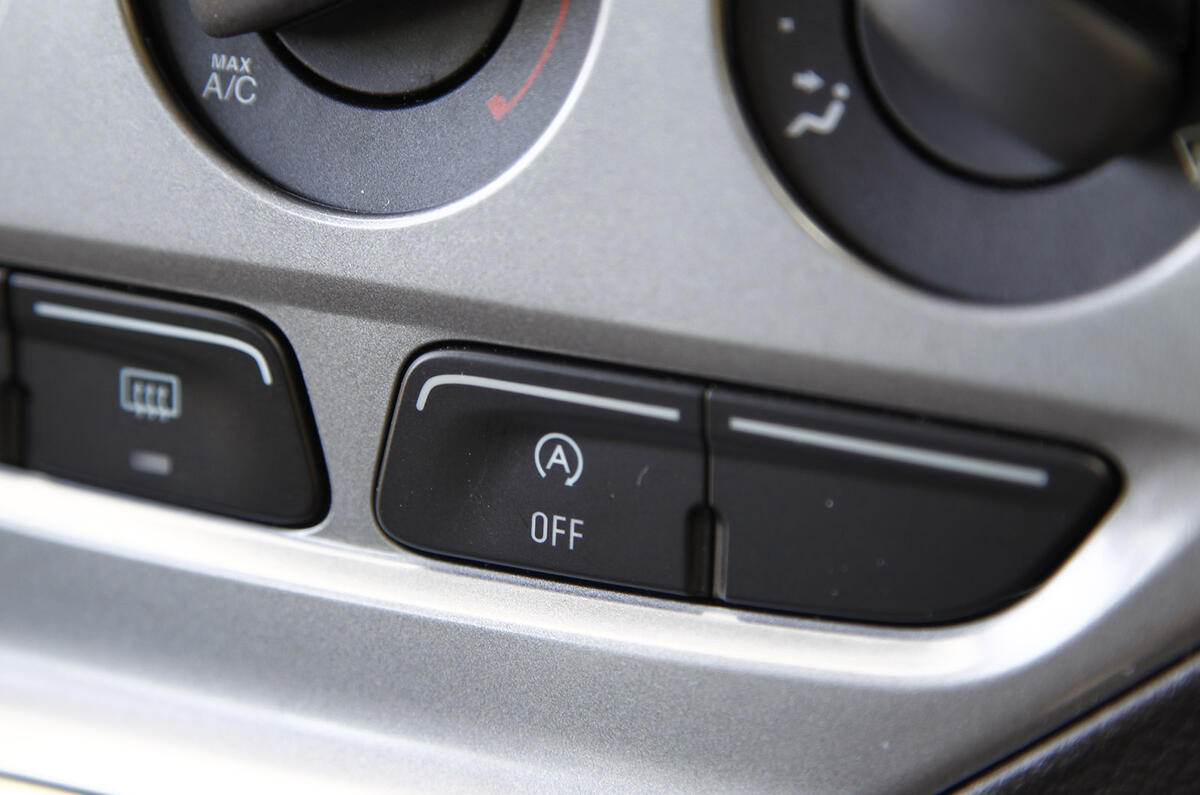The increasingly common technology designed to save fuel might reduce consumption, but what effect does it have on engine life?
In urban situations especially, stop-start should be making a real-world difference, but will the durability of engines be affected in the long term?
What is stop-start technology?
Stop-start is a system on most modern cars that cuts the engine when the car is stationary, in order to reduce fuel consumption and emissions. The engine starts again when the clutch is engaged or the brake is released, or when the driver is ready to move again.
How does stop-start work?
The system uses a computer to detect when the car is stationary or the car is out of gear, at which point it halts fuel delivery and spark to the engine. The ignition starts again when the car begins moving or the clutch is pressed.
The process happens automatically, but drivers can choose whether the system is active or disabled by pushing their car's stop-start button; a capital A with an arrow circling clockwise.

A conventional electric starter motor works by engaging a small pinion gear with a large 'ring' gear fitted around the outside of the engine flywheel.
The latest stop-start technology looks much the same but the motors are more powerful, faster acting and more robust. Some are designated 'TS' for 'tandem solenoid' and designed to cope more smoothly with scenarios where the engine is about to stop and then the driver accelerates again.
Read more: How to buy a used car - expert top tips
Such a moment may come when the driver has decided to stop, but for whatever reason has a change of mind, such as when the traffic moves off unexpectedly.
At that moment the engine might be 'committed' to stopping but is still spinning, so to avoid crunching, one solenoid fires up the starter motor to synchronise its speed with the engine before the second smoothly engages the gear.

Disadvantages of stop-start technology:
Does stop-start wear out my engine?
When it comes to durability and long life, all the bases relating to the starter gear itself should be covered, but the higher number of stop-start cycles lead to increased engine wear unless steps are taken to prevent it.
"A normal car without automatic stop-start can be expected to go through up to 50,000 stop-start events during its lifetime," says Gerhard Arnold, who is responsible for bearing design at Federal Mogul.
"But with automatic stop-start being activated every time the car comes to a standstill, the figure rises dramatically, perhaps to as many as 500,000 stop-start cycles over the engine's life."
That's a big jump and one that poses major challenges to the durability and life of the engine's bearings.
A fundamental component of the engine and also one of the heaviest is the crankshaft. It's supported as it spins by a number of precision ground journals along its length running in 'plain' main bearings (no ball bearings or rollers, just smooth metal). These are the main bearings and the effect is greater on the bearing at the back of the engine immediately adjacent to the starter motor.
When the engine is running, the crankshaft and main bearing surfaces don't actually touch, but are separated by a super-thin film of oil, fed under pressure and pumped around the bearing surfaces by the action of the spinning crankshaft. This process is called 'hydrodynamic lubrication' but when the engine stops, the crank settles onto the bearing, the two metal surfaces coming into contact.
Read more: Winter car maintenance tips

How rust helps to prevent wear
When the engine starts, there's a point before the two surfaces become separated by the oil film called the 'boundary condition', where the crankshaft is spinning, but there's metal-to-metal contact between the bearing surfaces.
This is when most wear takes place. Fitting stop-start means the boundary condition (and metal-to-metal contact) could exist perhaps 500,000 times in the life of the engine instead of 50,000 and normal bearings would wear out long before that.
Read more: How to look after your turbocharged car
Two things prevent that happening. The first is that bearing manufacturers are developing new bearing material with greater self-lubricating properties to resist wear on start-up.
Federal Mogul has developed a new material called Irox with a polymer coating containing particles of iron oxide (rust), which in this microscopic form is surprisingly slippery.
In fact it's so slippery that the coefficient of friction of an Irox bearing is 50 per cent lower than a conventional aluminium bearing and will easily last the life of an engine equipped with stop-start.

Low friction oils help prolong engine life
The second is improvements in lubricating oils. A modern engine oil contains an additive package comprising a complex chemical cocktail. The technical director of UK company, Millers Oils, Martyn Mann, says the formulation of these packages are critical: "We've reduced friction with our oils and improved durability of the oil film and we think that has to be the way forward with stop-start systems."
Millers began researching low-friction oils in its laboratories back in 2006. "We put a formulation together, tested it on a friction rig and found we could reduce the sliding friction between typical components like pistons and liners by 50 percent," says Mann.
Read more: What oil should I put in my car?
Generally, this reduces heat, power loss, fuel consumption and wear but Miller's new triple ester nano-technology, known as Nanodrive, goes further. Tiny nano-particles like microscopic ball bearings exfoliate under high pressure, the polymer 'flakes' adhering to the engine surfaces.
So far the technology is available only in Miller's high-end racing oils, but in relation to stop-start, it could also reduce wear during each re-start when the most wear takes place.
With low-friction bearing and lubrication technology in place the potential threat to engine life by stop-start systems should theoretically be overcome. But the current technology is still relatively new and only time will tell whether every car manufacturer has got it right.

Does stop-start help save fuel?
Yes - in situations where you're stationary with the engine idling, such as in heavy traffic or waiting for traffic lights to change, it will save however much fuel would have been used by the engine while the car is stationary.
How much fuel is saved is often disputed and depends almost entirely upon the type of driving undertaken with the system. Obviously, more stationary time means more fuel saved. There are also occasions when stop-start will not kick in, for example if the engine is cold, the system is less likely to intervene, to allow the engine to warm up fully. It may also not shut off the engine if the battery is below a certain level, if, like Volvo's system, the driver unfastens their seatbelt, or if you turn the air conditioning on.
Stop-start is also designed to decrease emissions in urban areas where traffic is more likely to be stationary for longer, so despite the benefit to drivers' fuel consumption, there are more benefits to the systems than monetary ones.
Top 13 car brands that hold their value the best
Read more: Car tax: everything you need to know about Vehicle Excise Duty
Read more: Buying a car at an auction - six top tips
If you want to find out more about how much fuel your car uses, visit What Car? and try out the True MPG calculator.